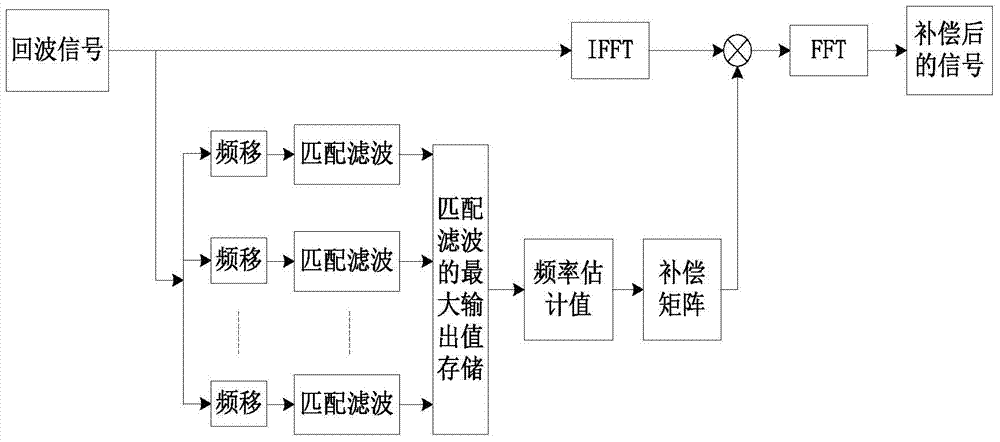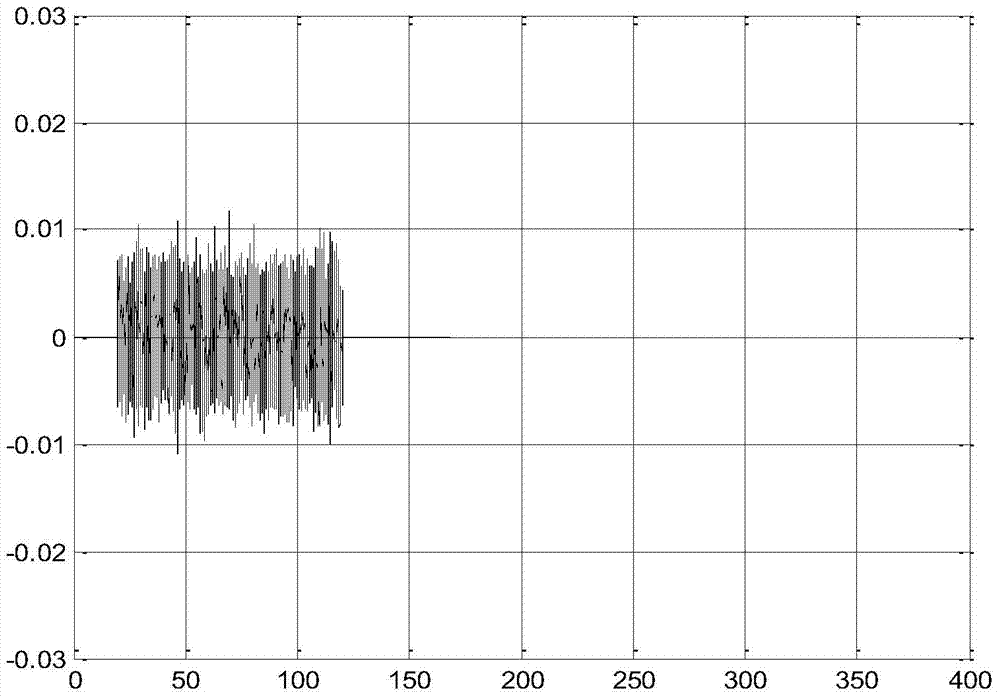Frequency domain-based Doppler compensation method for I-OFDM MIMO radar signal
A technology of I-OFDMMIMO and Doppler compensation, applied in the field of Doppler compensation, can solve the problems of impractical engineering, cumbersome process, and large amount of calculation
- Summary
- Abstract
- Description
- Claims
- Application Information
AI Technical Summary
Problems solved by technology
Method used
Image
Examples
Embodiment Construction
[0058] The present invention will be further described below in conjunction with accompanying drawing.
[0059] Such as figure 2 Shown, the Doppler compensation method based on frequency domain I-OFDM MIMO radar signal comprises the following steps:
[0060] Step 1. Assume that the MIMO radar transmitting and receiving antenna arrays each have 4 antennas, that is, M=N=4; the distance between adjacent elements of the two arrays is 4 meters, that is, d T = d R =4m; Suppose the distance between the moving target and the antenna array is 3 kilometers, R=3km. The radial velocity of the target is v T =62.5m / s, the working frequency of I-OFDM radar signal is f 0 = 24GHz. In theory, the corresponding Doppler frequency shift is f v =10KHz=0.25·(4Δf), taking the first receiving antenna as an example, the received signal is:
[0061] r 1 ( t ) = δ Σ ...
PUM
 Login to View More
Login to View More Abstract
Description
Claims
Application Information
 Login to View More
Login to View More - R&D
- Intellectual Property
- Life Sciences
- Materials
- Tech Scout
- Unparalleled Data Quality
- Higher Quality Content
- 60% Fewer Hallucinations
Browse by: Latest US Patents, China's latest patents, Technical Efficacy Thesaurus, Application Domain, Technology Topic, Popular Technical Reports.
© 2025 PatSnap. All rights reserved.Legal|Privacy policy|Modern Slavery Act Transparency Statement|Sitemap|About US| Contact US: help@patsnap.com



